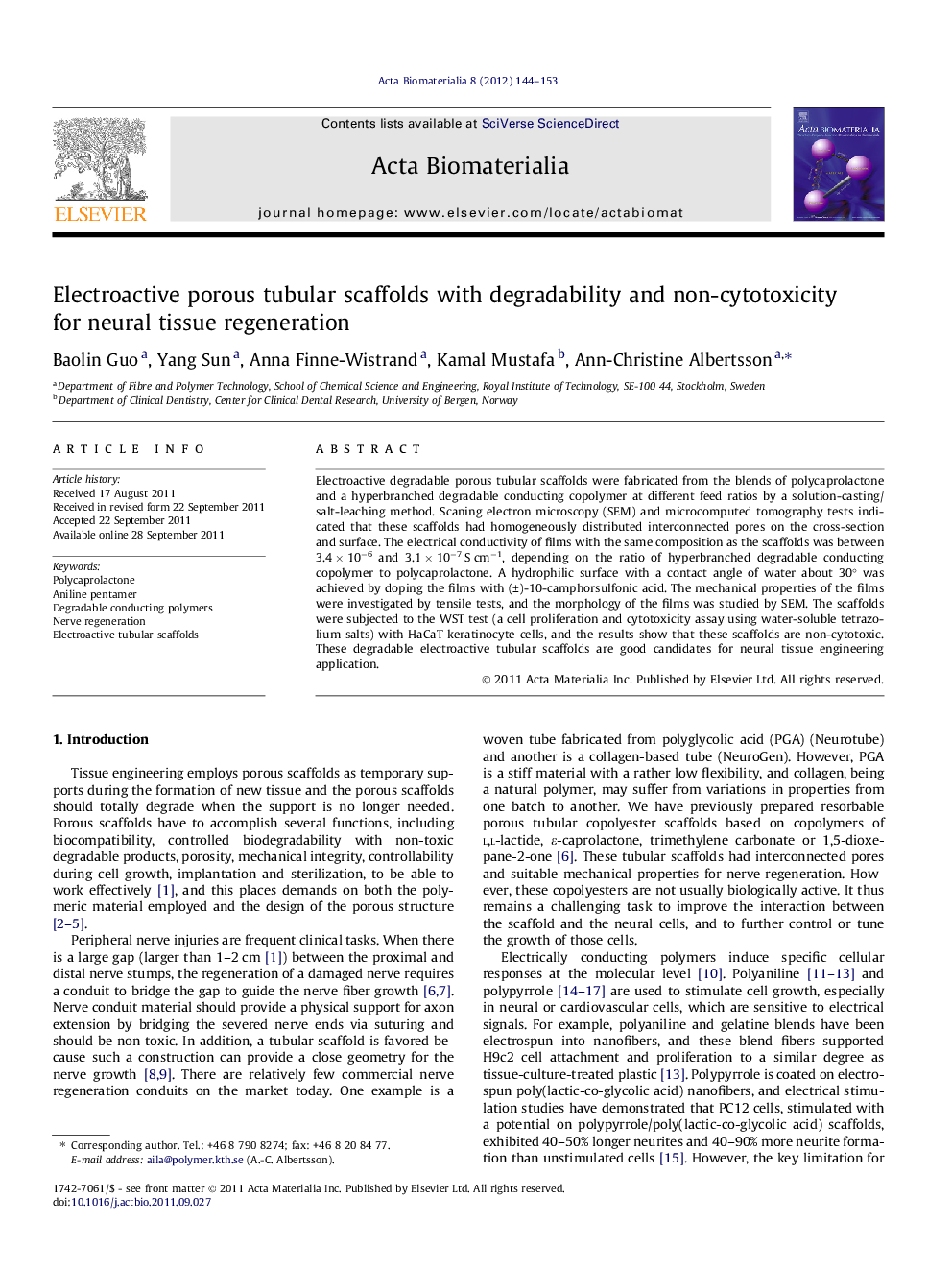| Article ID | Journal | Published Year | Pages | File Type |
|---|---|---|---|---|
| 10160076 | Acta Biomaterialia | 2012 | 10 Pages |
Abstract
Electroactive degradable porous tubular scaffolds were fabricated from the blends of polycaprolactone and a hyperbranched degradable conducting copolymer at different feed ratios by a solution-casting/salt-leaching method. Scaning electron microscopy (SEM) and microcomputed tomography tests indicated that these scaffolds had homogeneously distributed interconnected pores on the cross-section and surface. The electrical conductivity of films with the same composition as the scaffolds was between 3.4 Ã 10â6 and 3.1 Ã 10â7 S cmâ1, depending on the ratio of hyperbranched degradable conducting copolymer to polycaprolactone. A hydrophilic surface with a contact angle of water about 30° was achieved by doping the films with (±)-10-camphorsulfonic acid. The mechanical properties of the films were investigated by tensile tests, and the morphology of the films was studied by SEM. The scaffolds were subjected to the WST test (a cell proliferation and cytotoxicity assay using water-soluble tetrazolium salts) with HaCaT keratinocyte cells, and the results show that these scaffolds are non-cytotoxic. These degradable electroactive tubular scaffolds are good candidates for neural tissue engineering application.
Related Topics
Physical Sciences and Engineering
Chemical Engineering
Bioengineering
Authors
Baolin Guo, Yang Sun, Anna Finne-Wistrand, Kamal Mustafa, Ann-Christine Albertsson,
